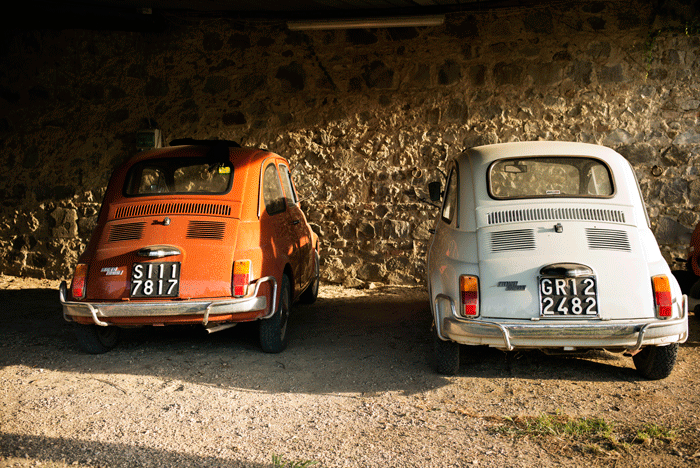The sipping forecast – part one
Author: David Berry Green
Giovanni Scarfone at Bonavita, Sicily
After a dry winter with little rain and higher than average temperatures we were met with a wet spring. The summer was very fresh too, with accentuated temperature variations and downpours right through until the end of July. This meant flowering was difficult, leading to a low crop – down 30 percent on 2013 – especially the Nerello Mascalese variety. We harvested from 8th to 10th October, and the quality of the fruit was ottima (excellent), with very good phenolic maturation along with good sugar levels. In short, this could be described as a ‘nordic’ year due to the fresh, dry August which enabled the fruit to ripen slowly, aided by a dry September that facilitated a maturation of grapes without disease and a good phenolic concentration with very elegant aromas.
Lisa Gilbee at Morella, Puglia
It began with a warm winter. We were worried about early budburst and frost risk so we pruned as late as possible; this ended up being a blessing because we had a severe hail storm in Manduria in April. Damage was limited to the white grapes which had already burst and one plot of Primitivo which had been pruned early. In the springtime it rained – the most number of days and quantity that I have recorded. This lead to lovely growth, and extra work for us spraying and thinning. The workers were flat out in the vineyard, with extra mowing and a new bush-vine vineyard.
Véraison came on time, but quantities were down in general with one plot in particular losing its grapes to downy mildew. The last rain fell in July and, most importantly, August was hot and dry (the only month of summer last year). The whites began a little later than usual, after Ferragosto (15th August). The Primitivo was on time, in the last week of August. It was a rush against time to get all the Primitivo into the winery before the rains predicted on 2nd September. They arrived on the 3rd with the last of the grapes harvested that day and the winery completely full. Negroamaro and Malbec were picked late, after the rains, but held up well being thick-skinned.
The Primitivo in the winery is very good, exceptional even considering the risks run this year, as any of the events could have brought disaster. It was a tightrope walk but we were lucky and got to the other side undamaged.
Giovanni Faraone at Faraone, Abruzzo
The 2014 vintage was characterised by a delay to the flowering; it then rained from the spring to the beginning of August, triggering an attack of downy mildew that, during the post-flowering period, burnt entire bunches that required successive treatments. Thereafter the fine weather until mid-October helped the maturation of the grapes.
The whites, namely Trebbiano, Pecorino and Passerina, appear fresh, pale in colour through lack of sun, surprisingly full-bodied and with less alcohol. The extra level of dry extract (five points more than average) is due either to the naturally low yield (ten to fifteen percent less), or to a more efficient maceration of the skins, or thanks to the slow, even ripening of the grapes – without the heat stress of previous years. So we’re happy with them; they should taste good and have a long life.
While for the red Montepulciano it won’t be a great year, it’s not as bad as we once feared. There is less alcohol but with levels of extract on a par with past years, but we should wait before judging.
Look out for the next instalment of ‘The sipping forecast’, with updates from Scopetone, La Monacesca, Bele Casel and La Cappuccina.



